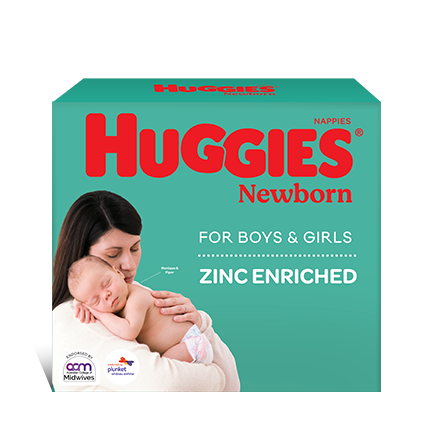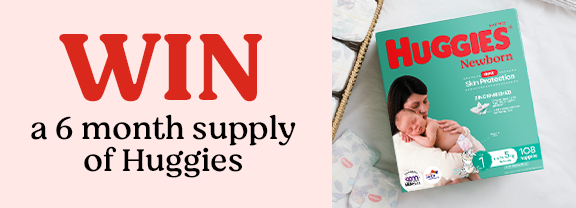It is very overwhelming for parents who find themselves in the Neonatal Intensive Care Unit (NICU) with their premature baby. Apart from learning to deal with the emotional aspect to having given birth to a premmie baby, they also have to learn very quickly all the terms used by the nursing staff in the NICU. Here is an overview of some of the terms that you may encounter.
Anemia
Too few red blood cells. Anemic babies may need blood transfusions
Apnoea
A short period of time when the baby does not take a breath.
Aspiration
The drawing in of foreign matter or other material in the upper respiratory tract into the lungs. Aspiration also refers to a medical procedure in which fluids are sucked out of the lungs, nose, or mouth using a suction device.
Bagging
Helping the baby to breathe by connecting a special rubber bag either to a mask over the mouth or to a tube in the trachea and lung.
Bilirubin
A chemical created by the breakdown of the red blood cells. A large amount of this bilirubin in the body causes yellow coloring of the skin and eyes (jaundice). Nearly all babies have some jaundice, including healthy full-term babies.
Bilirubin lights (bili lights)
Fluorescent lights that reduce jaundice; help break down the bilirubin in the skin. Baby is undressed to expose as much skin surface as possible; the baby’s eyes are covered with patches or a mask. Also called phototherapy.
Blood gas
A test using a small amount of blood to measure levels of oxygen and carbon dioxide in the blood.
Bradycardia
A slower than normal heartbeat; often occurs with apnoea.
Catheter
A tube which puts fluids into the body or drains fluids out.
Chest tube
A tube inserted through the chest wall; used to suction air and/or fluids from the chest.
Continuous Positive Airway Pressure (CPAP)
A continuous amount of air, sometimes with added oxygen, is delivered through tubes in the baby’s nose to keep the airways of the lungs open as baby breathes.
Culture
Taking a sample of blood or body fluids to test for germs which may cause an infection.
Cyanosis
A bluish colouring of the skin and lips caused by a low level of oxygen in the blood.
Edema
The collection of extra fluid in body tissues, causing swelling or puffiness of skin.
Electrode
A sensor which sends heartbeat and breathing information to the monitor. They can be placed on the chest, arms, or legs. Also called leads.
Electrolytes
Sodium, potassium, and chloride levels in the blood. Correct levels of these chemicals must be present so that the body organs can function properly.
Endotracheal tube (ET tube)
A plastic tube inserted through the nose or mouth into the trachea (windpipe) to help breathing; usually
connected to a breathing machine (ventilator).
Extubation
The process of removing an endotracheal tube.
Nasogastric tube (NG tube)
A tube inserted through the nose or mouth (orogastric or OG) and into the stomach. The tube delivers nutrients and medications, and removes undigested food and fluids from the stomach.
Gavage feeding
Feeding a baby through a gastric tube inserted into the stomach.
Gestational age
The length of time from conception to birth (how long the baby stays in the womb). Full-term gestation is between 38 and 42 weeks.
High frequency ventilation (HFV)
A type of ventilator which gives very small breathes at a very fast rate; the baby’s chest will actually vibrate. HFV works differently from “conventional” ventilation to treat specific breathing or lung problems.
Hyaline membrane disease (HMD)
A breathing problem that causes the tiny air sacs in the lungs to collapse; usually due to lung immaturity and lack of a natural lung chemical (surfactant). Also called respiratory distress syndrome (RDS).
Hydrocephalus
Excess spinal fluid causing enlargement of the ventricles in the brain.
Hypoxia
A low level of oxygen in the body tissue. If very low, tissue damage can occur.
Incubator / isolette / humidicrib
A small, heated bed enclosed in clear plastic. Keeps the baby warm, while allowing caregivers see the baby.
Intraventricular haemorrhage (IVH)
Bleeding within the brain’s ventricles (spaces in the brain which contain spinal fluid). Also called intracranial haemorrhage (bleeding in or around the brain).
Intravenous line (IV)
A hollow needle or plastic tube inserted into a vein; used to give fluids, blood, and or medications.
Intubation
Placing a tube through the nose or mouth into the trachea (windpipe).
Jaundice
The yellow discoloration of a baby’s skin and eyes caused by too much bilirubin in the blood.
Kangaroo Care
Skin-to-skin contact where baby is positioned on mum or dad’s bare chest to promote bonding and healing.
Meconium
The first bowel movement/stool passed by a newborn, usually dark green and sticky.
Meconium aspiration syndrome
A type of pneumonia caused by stool being passed by the baby while still in the womb. The stool can be inhaled into the baby’s lungs and can partially or completely block the baby’s air passage. This makes it difficult for the baby to breathe.
Nasal Canula
A small plastic tube placed under the nose to provide oxygen.
Necrotizing Enterocolitis (NEC)
A bowel condition caused by lack of blood supply. A section of the bowel may become severely inflamed or infected.
NICU
Neonatal Intensive Care Unit
Neonate
A newborn infant, less than 30 days old.
Neonatologist
A physician who specializes in the care of critically ill newborn infants.
Oscillator
A type of high frequency ventilator.
Oxygen saturation
The level of oxygen in a baby’s blood. Oxygen level is measured by a small probe on the baby’s hand or foot, also by blood samples. This level tells at-a-glance how well oxygen is being carried through the body.
Patent Ductus Arteriosus (PDA)
A small vessel (ductus) between the major arteries of the heart and the lungs. Before birth, this vessel is open and allows blood to bypass the lungs (not yet in use). When this opening fails to close after birth, it can cause problems with oxygen rich blood getting to the body.
Peripherally Inserted Central Catheter (PICC)
A flexible, thin IV tube put into a vein in the arm, foot, or leg and then routed up into, or near, the heart.
Persistent Pulmonary Hypertension of Newborns (PPHN)
A serious condition that causes the baby to return to its prebirth route of blood circulation. The baby’s blood is only partially oxygenated through the lungs. This results in very low oxygen levels, plus a higher blood pressure in the arteries of the lungs. Treatment includes, oxygen, ventilator therapy, medications and/or ECMO. Also called persistent fetal circulation (PFC).
Phototherapy
See bilirubin lights.
Pneumothorax (pneumo)
Air escapes from the lung into the chest cavity, creating a pocket of air in the wrong place. This pocket of air then presses on the lungs or heart. A chest tube or catheter can be inserted to remove the pocket of air, which lets the lungs re-expand.
Pulse oximeter
An electronic monitor that detects oxygen saturation in the blood using a light sensor probe.
Respiratory Distress Syndrome (RDS)
See hyaline membrane.
Retinopathy Of Prematurity (ROP)
An eye disorder, involving the retina that can occur in premature infants.
Room air
The ordinary air we breathe which contains 21% oxygen. Oxygen therapy can deliver from 22 – 100% oxygen.
SCN
Special Care Nursery
Sepsis
An infection caused by bacteria.
Spinal tap
The removal of a small amount of fluid from the spinal canal. The fluid is then analyzed for infection, bleeding, and other disorders.
Surfactant
A substance in the lungs that helps keep the tiny air sacs from collapsing and sticking together. A lack of this substance contributes to Respiratory Distress Syndrome (RDS).
Transient Tachypnea of the Newborn (TTN)
A condition when a baby breathes with quick, shallow breathes (usually over 80 breaths per minute). It is often caused by fluid in the lungs and will improve as this fluid is absorbed. Some babies need oxygen as this resolves. TTN is often associated with cesarean delivery.
Umbilical Catheter, Arterial or Venous (UAC, UVC)
A tube inserted through the belly button (umbilical cord) into the arterial or venous blood vessels. Either tube is used to give the baby fluids and to draw blood samples. The UAC is used to monitor the baby’s blood pressure. If the baby requires oxygen therapy, the UAC will be used to draw blood gases and blood samples.
Ventilator
A machine which fills the baby’s lungs with air and helps the baby breathe. Also called a respirator.
Ventricles of the brain
Spaces in the brain that contain spinal fluid to bathe and cushion the brain.
References
Laws PJ, Grayson N & Sullivan EA 2006. Australia’s mothers and babies 2004. Perinatal statistics series no. 18. AIHW cat. no. PER 34. Sydney: AIHW National Perinatal Statistics Unit.
Dyer KA. 2007. For Those Who Hold The Littlest Hands. [Brochure] Retrieved October 6, 2007.
Lui K, Bajuk B, Foster K, et al. Perinatal care at the borderlines of viability: a consensus statement based on a NSW and ACT consensus workshop. Med J Aust 2006; 185: 495-500.
Presbyterian Hospital of Dallas. Special Beginnings: A Parents Guide to the NICU. [Brochure] Retrieved 2006.
Meriter Health Services. Preemie Health. Retrieved September 7, 2007.
Lifes Little Treasures. Parents Information Guide. 2007
Powell K.(2001). Ambiguous Loss – Experiencing Joy and Grief after the Birth of a Premature Child. Retrieved September 17, 2007.
American Pregnancy Association. Premature Birth Complications. Retrieved September 20, 2007.
The Regional Neonatal Center – Maria Fareri Children’s Hospital at Westchester Medical Center Neonatology. Retrieved 2006.
The Birth Trauma Association. Post Natal Post Traumatic Stress Disorder. Retrieved October 11, 2007.
Information on this page has been kindly provided by representatives of the National Premmie Foundation.
All material here is for informational purposes only and should in no way replace or be used as a substitute for, professional medical advice.
NPF Help and Information Line 1300 PREMBABY 1300 773 622 local call cost AU wide 24 hours
Last Published* May, 2024
*Please note that the published date may not be the same as the date that the content was created and that information above may have changed since.






















